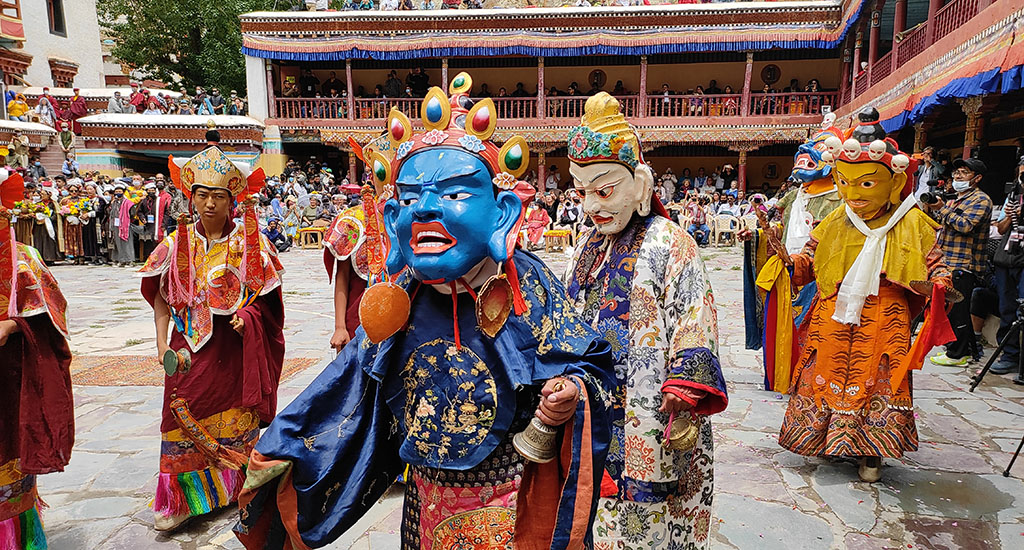
Festivals in India: What’s behind the masks in Leh’s Hemis Festival?
This festival season we look back at Ladakh’s Hemis Festival that showcases the rich culture of dances and masks that are steeped in meaning.

This festival season we look back at Ladakh’s Hemis Festival that showcases the rich culture of dances and masks that are steeped in meaning.
As dawn breaks over the valley and turns gradually into a brighter morning, an elderly lady checks her bag again before leaving the house. A bowl, a small mani stone inscribed with the six-word mantra of the Tibetan Buddhists, a handful of rice and flour, a packet of incense sticks and a small piece of cloth – she makes sure these essentials are in her bag.
Dolma, the 75-year-old woman from a picturesque Chochut village in Leh, is going to attend the famed Hemis Festival. She hurries along with her two young granddaughters to catch the bus to the monastery in time, since the festival begins early in the morning.
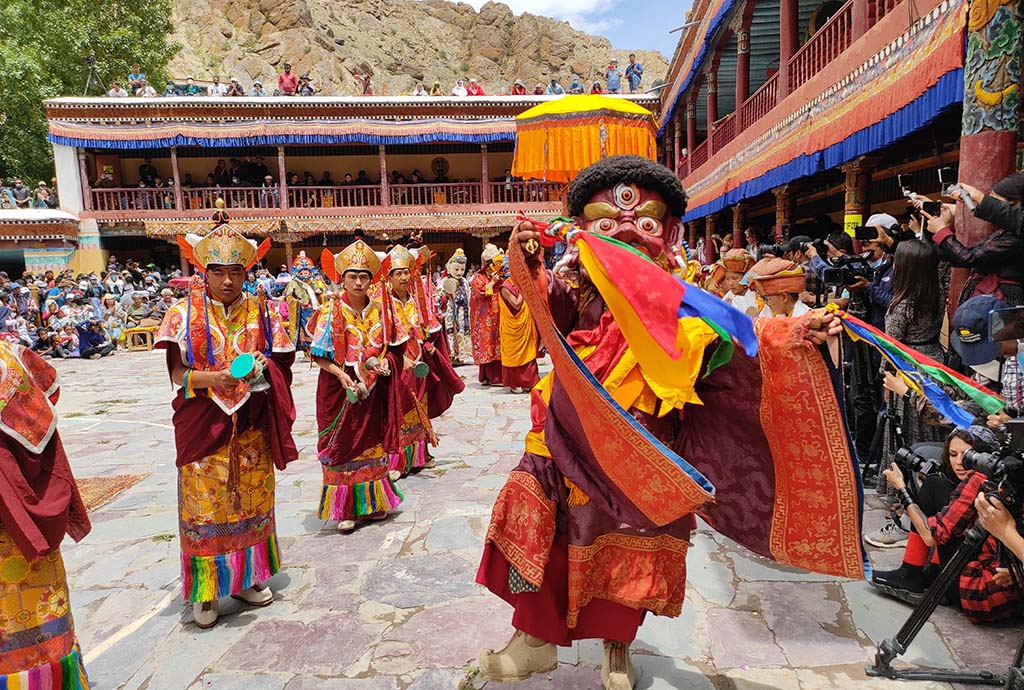
And she made it to the festival on time.
“I took the first bus to reach here. Because this is not just about the festivities. The festival means a whole world to me. I wanted to be a part of it right from the beginning and thank God, I am here in time,” said Dolma.
While the Hemis Festival is a cultural attraction for tourists, for people like Dolma the festival holds a deeper significance.
It is an annual festival held at the Hemis Monastery in the scenic Ladakhi hamlet of Hemis at the foothills of a rocky mountain.
The two-day festival celebrates Guru Padmasambhava – also known as Guru Rinpoche – one of the founding fathers of Tibetan Buddhism, also known as the second Buddha of the Himalayan region.
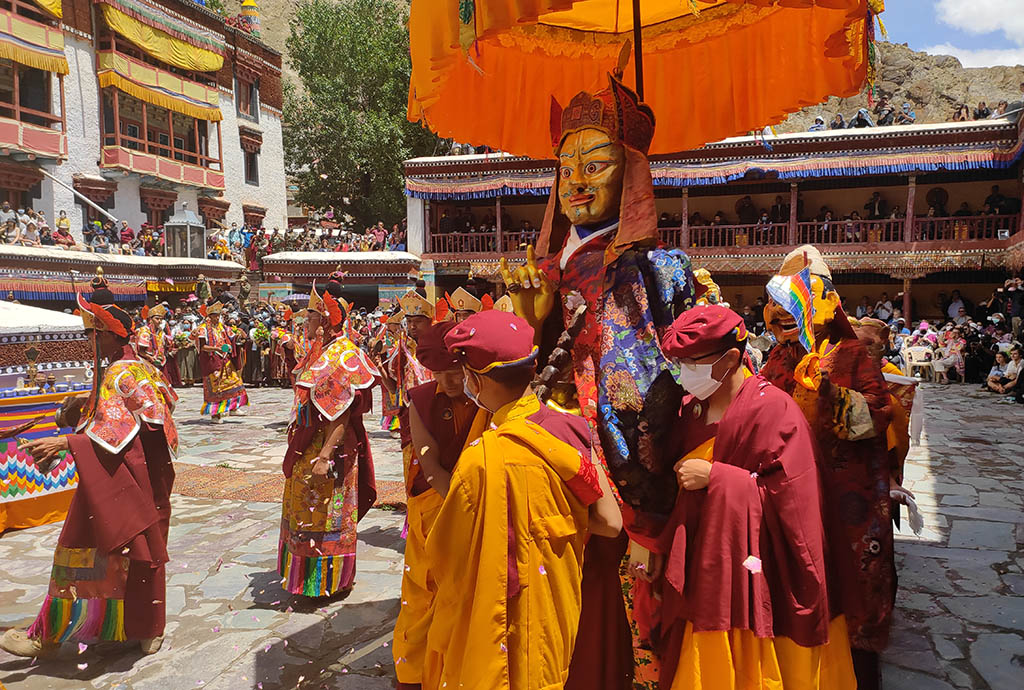
The festival is held on the birth anniversary of the Guru, the dates being decided as per the Tibetan calendar. This year it was held in early July.
The festival is a major attraction for thousands of the faithful and tourists who come for the vibrant display.
While scores of rituals having both cultural and religious significance in Ladakh are performed during the festival, a unique dance by a group of monks donning masks steals the show.
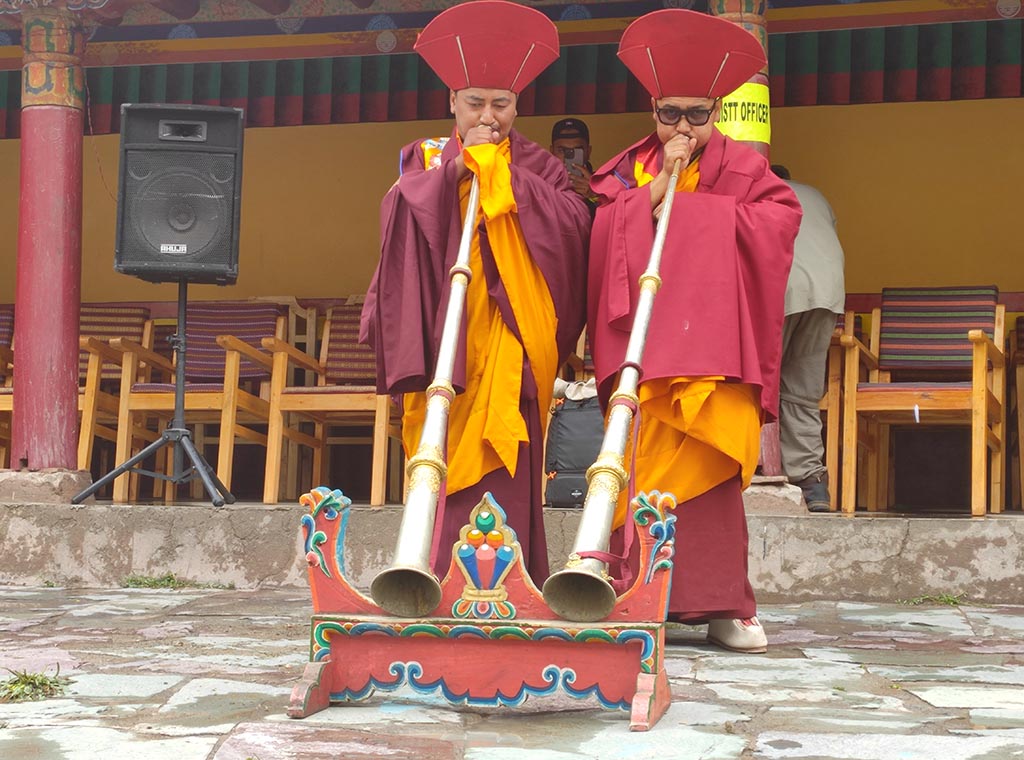
As the loud sounds of traditional trumpets mark the beginning of the ritualistic celebrations, it is followed by four rounds of a mask dance performed in the courtyard of the monastery.
As the first group of dancers donning blue-coloured mask and traditional dress mesmerise the audience, the second group of dancers wearing yellow masks gets the onlookers excited.
The dancers in both the groups are monks – thirteen in each troupe – as the number has a significance in local tradition.
In the third round of dance, 16 monks wearing multicoloured masks perform for the Devi and the Devtas.
During the fourth round of masked dance, a large number of dancers donning a variety of masks dance individually before the masker posing as Guru Padmasambhava.
While the maskers dance in perfect harmony, the local music coupled with the occasional loud bangs and sounds from the trumpet add to the celebratory ambience.
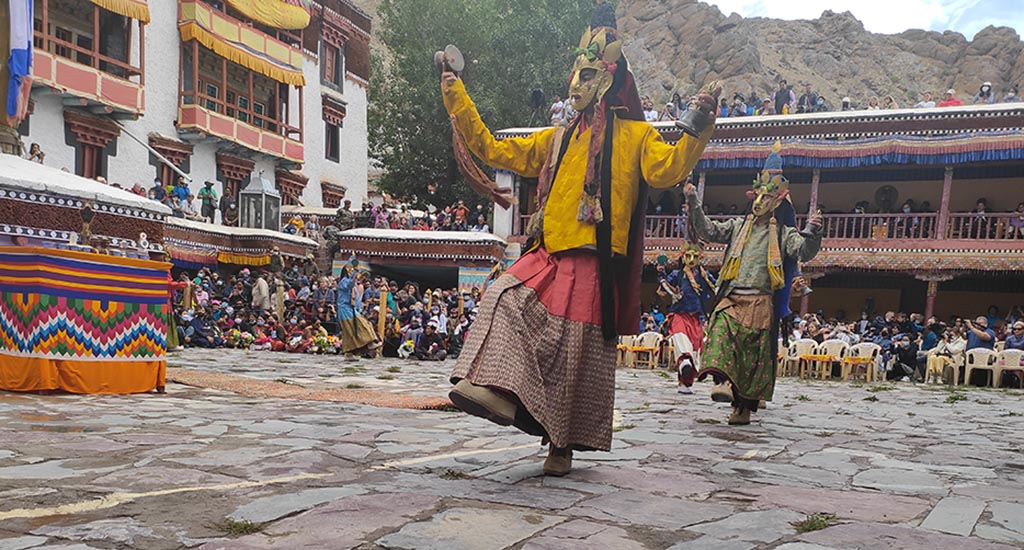
But as many like Dolma believe, it is not just a celebration.
Since the dance is a blend of staunch faith and rich culture, there are people who read a deeper meaning behind the masks.
For the elderly Dolma, masks are a means of emancipation and spirituality.
“I have been attending this festival since my childhood. I don’t think I have ever missed the Hemis Festival even after marriage. These masks and the atmosphere touch my soul. They pull me into a world free of worries,” Dolma told Village Square.
She also regards the masks as a symbol of mukti or enlightenment. For that reason she has been bringing her two granddaughters to the festival for the past few years. Because she wants them to understand the importance of tradition and faith.
“When I was a kid, I learned from the elders that masks are a symbol of death. My grandfather used to tell me that masks represent the variety of Avtaars who finally take the soul away from our body,” says 16-year-old Stenzin, a Class X student.
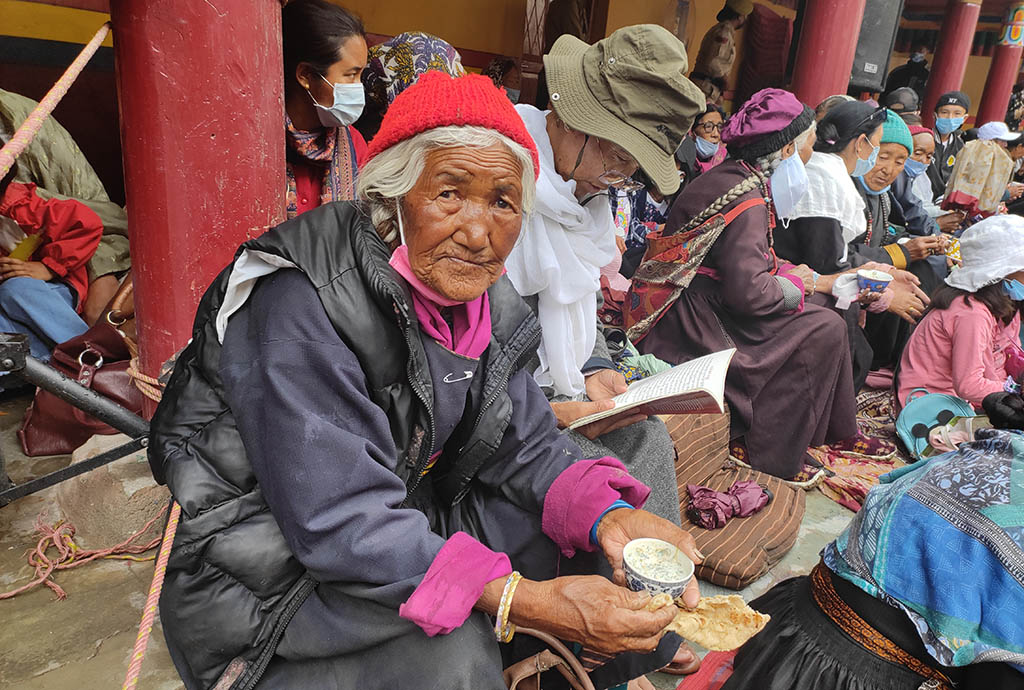
He admits to being scared of the masks initially and being filled with terror.
“But gradually I came to understand that these masks represent a reality of life. Everybody on this earth has to taste death. Now that I am familiar with these masks, I have no fear from the masked Avtaar taking my soul away at the time of death,” said Stenzin.
However, for Hahang, a 50-year-old apricot farmer, who has travelled about 70 kilometres from his village Khaltse to Hemis along with his family, the masks are a source of peace, tranquility and mercy.
“When I look at these masks, my heart is filled with joy as I think I am being blessed by the Guru. I have always found a blessing in these masks,” Hahang told Village Square.
The mask dance is being performed from the times when kings ruled Ladakh.
According to Jigmet Lama, a senior monk from Hemis, the masked dance marks the tradition of appeasing the Guru.
“These masks signify peace, compassion and unity. That is what we pray for during the festival too,” said Lama.
The lead image shows the masked dancers, an important tradition in the Hemis Festival.
Nasir Yousufi is a journalist based in Srinagar.